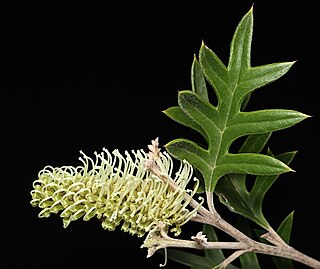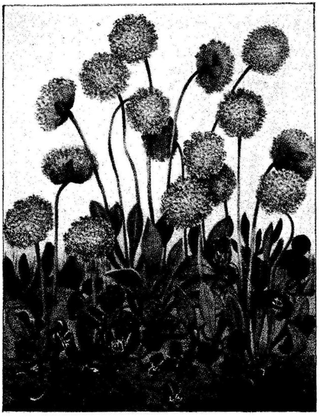
Epacris impressa, also known as common heath, is a plant of the heath family, Ericaceae, that is native to southeast Australia. French botanist Jacques Labillardière collected the species in 1793 and described it in 1805. Four forms have been identified, but no subspecies are recognised. Growing in heathland, shrubland or open forest, it is generally a small shrub around 0.5 to 1 m tall, with small stiff leaves. The red, pink or white tube-like flowers appear from late autumn to early spring. Honeyeater birds, particularly the eastern spinebill, feed upon the nectar of the flowers. It regenerates after bushfire by seed or by resprouting.

Baron Sir Ferdinand Jacob Heinrich von Mueller, was a German-Australian physician, geographer, and most notably, a botanist. He was appointed government botanist for the then colony of Victoria (Australia) by Governor Charles La Trobe in 1853, and later director of the Royal Botanic Gardens, Melbourne. He also founded the National Herbarium of Victoria. He named many Australian plants.
James Hamlyn Willis was an Australian botanist. He described 64 new species of plants, and published more than 880 works including the landmark two-volume A Handbook to plants in Victoria between 1962 and 1973.
Bruce Alexander Fuhrer OAM was an Australian botanist and photographer, specialising in cryptogams. His photographic collection of fungi numbers more than 3000 species.

The National Herbarium of Victoria is one of Australia's earliest herbaria and the oldest scientific institution in Victoria. Its 1.5 million specimens of preserved plants, fungi and algae—collectively known as the State Botanical Collection of Victoria—comprise the largest herbarium collection in Australia and Oceania.
Raleigh Adelbert Black was an Australian botanist and public servant best known for his large private herbarium, most of which is housed at the National Herbarium of Victoria. His collection of Tasmanian plants is considered one of the largest and most representative collections of Tasmanian flora from the first half of the twentieth century.

Grevillea willisii, commonly known as Omeo grevillea or rock grevillea, is species of flowering plant in the family Proteaceae, and is endemic to the eastern highlands of Victoria, Australia. It is a spreading to erect shrub with pinnatipartite leaves, the end lobes broadly triangular to oblong and sometimes sharply pointed, and dense clusters of greenish-white to fawn-coloured flowers with a white to cream-coloured style.

Grevillea jephcottii, commonly known as Pine Mountain grevillea, green grevillea or Jephcotts grevillea is a species of flowering plant in the family Proteaceae and is endemic to a restricted area of Victoria. It is a low dense, to tall spindly shrub with narrowly oblong to narrowly elliptic leaves, and clusters of pale lemon or greenish flowers with a purplish style.
Roger David Spencer is an Australia horticultural botanist who was born at Alfreton, Derbyshire. He has an honours degree in botany from the University College of Wales, Aberystwyth, a master's degree and doctorate from the University of Melbourne and a technical certificate in gardening and turf maintenance from Oakleigh Technical College, Melbourne. He is currently horticultural botanist at the Royal Botanic Gardens Melbourne where he works in the Plant Identification Service, contributing locally and internationally to the study of cultivated plant taxonomy.
Alexander Clifford "Cliff" Beauglehole was an Australian farmer, botanist, plant collector and naturalist.
Helen Isobel Aston was an Australian botanist and ornithologist.
Arthur Bertram Court was an Australian botanist

Timothy John Entwisle, is an Australian botanist, much of whose research work is in phycology (algae). See for example the articles. He was awarded a Ph.D. from La Trobe University in 1986 for work on the taxonomy of Vaucheria.
Flora Mary Campbell was a professional female botanist working in Australia in the late 1800s. She collected type specimens of Goodenia pusilliflora F.Muell. and Dicranum senex Mull.Hal. as well as 82 fungi. The Department of Agriculture hired her in 1888 to investigate hop-spider in Gippsland, a position which promoted her from amateur (unpaid) to professional (paid) botanist.
Daniel J. Murphy is an Australian botanist.
Don Foreman was an Australian botanist who worked on the Monimiaceae and Proteaceae of Australia. He also helped with the editing of selected Flora of Victoria and Flora of Australia Volumes.
Louisa Isabella Chaulk Baudinet, also known as Lucy Baudinet or Miss Baudinet was an Australian botanical collector.
Josephine (Pina) Milne is an Australian bryologist, and former Manager Collections at the National Herbarium of Victoria at the Royal Botanic Gardens Victoria.

Olearia rugosa, commonly known as wrinkled daisy-bush, is a species of flowering plant in the family Asteraceae. It has alternate, wrinkled leaves and white daisy-like flowers and is endemic to south-eastern Australia.

Malcolm Ian Howie (1900-1936) was a self-taught commercial and botanical watercolour artist and Methodist local preacher.







